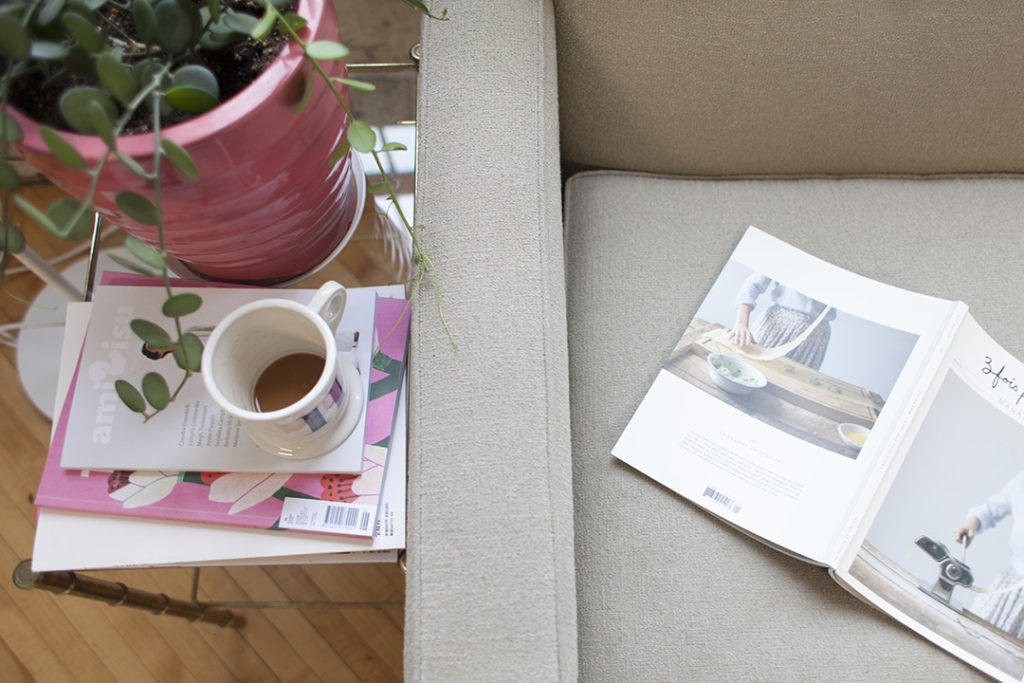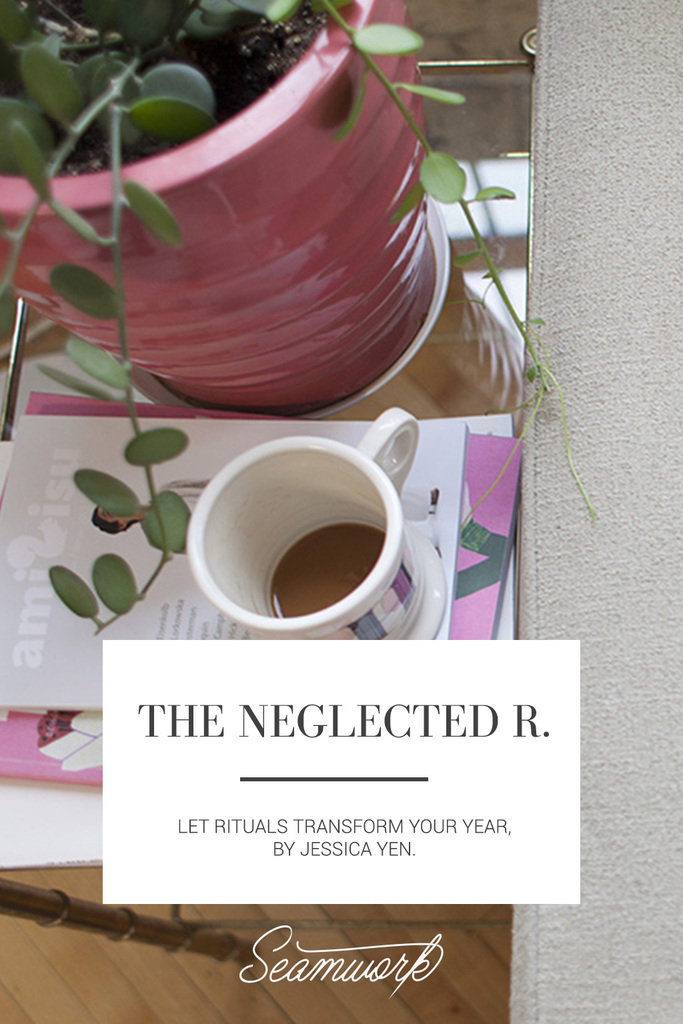The beginning of the year always sings with the fresh possibility of a clean slate. Many people channel this energy into New Year’s resolutions, that time-honored tradition for catapulting into a new, better year, with a new, better you. Although I love the enthusiasm behind resolutions, there’s another “R,” the ritual, which offers a gentler way to invite change into our lives. Rituals, particularly personal ones, can be low-key yet deeply meaningful. Think of them as the tortoise to the flashy resolution’s hare. As newspapers and blogs explode with “Top 5 Resolutions” suggestions, consider the ritual.
Rituals have been observed throughout history and all over the world, and are considered by anthropologists to be a universal feature of human social existence. They are specific, observable modes of behavior that are used to perform ceremonial acts. Although they are often associated with religious ceremonies, they can also be secular. In fact, some argue that collective experiences like the Olympics are a form of ritual. At the other end of the spectrum, researchers recently discovered that many mourners engage in private rituals to deal with major losses, such as the end of a relationship or the death of a loved one. These private rituals were specific to the person who created them, helped with the coping process, and were a major differentiator between mourners who eventually moved on and those who remained consumed by grief.
It is this last form of rituals, personal rituals, which can help us start off the new year on the right foot. Rituals can create pockets of time or space within our busy lives where we can enter into reflection, gratitude, focus on our intention to live consciously, and be present.
Personal Rituals

As the name implies, personal rituals are customized to the individual who creates and performs them. They can be performed in public or private, but the emphasis is on the individual’s intentions when they engage in the ritual. Seen one way, personal rituals are about self-care. When we engage in personal rituals, we identify a need or desire within ourselves, and then we create small but meaningful ways to meet those needs and desires on a regular basis.
One common use of personal rituals is to combat stress. Think of the office worker who pauses every afternoon for a tea break. They might take a break at the same time each day, have a special teapot and teacup set aside just for their break, and go through the exact same sequence of actions to prepare their drink. When it’s ready, they take a couple minutes to savor their warm beverage, before returning to finish their day. In doing so, they use a ritualized set of motions to disengage from the stress of work. This ritual creates a time- and activity-bound buffer for collecting themselves. Other common uses of personal rituals include being present, cultivating gratitude, and focusing on personal priorities. Some personal development gurus even suggest rituals as a way to create and reinforce good habits.
As I dug into this topic, I realized that in the past, I used knitting as a personal ritual. Several years ago when I had a fast-paced, stressful job, I began bringing my knitting with me to work. Even though I’m the type of person to chronically run five minutes late, I made sure to leave early each morning so I could steal a handful of minutes to knit before work. I’d pull into the parking lot, switch off the engine, exhale, and then reach for my project bag. Just touching the yarn calmed me down. The tension of the morning commute left my shoulders, and my work obligations felt less daunting. Even if I just managed five minutes of knitting, I started the day calmer, happier, and with a better perspective on life. As an added bonus, if I ever felt overwhelmed at work, I knew that relief was only a couple minutes away, sitting in a project bag.
Many of us could use a personal ritual to calm down and stay sane, and for those of us who already use knitting or sewing to fulfill that function, there are ways to use the elements of ritual to enhance those calming properties.
Building a Personal Ritual
The following steps can be used to create a personal ritual for your daily life. If you find that sewing already functions as a form of personal ritual (for de-stressing, for example), these principles might enhance the role that sewing currently plays in your life.
Pick an event. Personal rituals mean creating space to engage in the same activity every day, so consider both the physical space where the ritual will occur, and the mental space you’d like to inhabit. Where do you feel most relaxed? Is there a private area you can slip into for a few minutes? Is your sewing space clutter-free, calming, or set up for maximum efficiency?
Identify your intention. What do you hope to achieve with this ritual? What would you like to invite into your life? Decreasing stress, increasing mindfulness, maintaining perspective, and refocusing on goals are all common reasons people create personal rituals. Yours might be similar or wildly different; it’s a new year for all of us, so find something that suits you!
Begin the ritual with a few meaningful words that reflect your intention. By articulating your intention, you cue yourself to create space for the ritual. For example, when I set out on walks, I’ve started whispering the word “connection” to myself, as a reminder to use the time to connect with myself and the world around me. Without that prompt, it’s easy to spend the time preoccupied with the long list of little things stressing me out. If you’re sewing, you might run through the reasons you love to sew, or identify the feeling you’re seeking in this session (“calm,” “rejuvenated,” “empowered,” “creative,” etc.)
The first couple times you engage in a personal ritual, pay special attention to your physical, mental, and emotional experience. Notice if there are specific parts of the ritual that work particularly well, and see if you can use them to deepen the experience. For example, if you listen to podcasts as you sew, you might realize they create an immersive experience that pulls you out of the worries of daily life. In this case, you could see if there are other elements, like lighting a scented candle, that you can add to increase this feeling of total submersion.
Conclude the ritual. Take a couple moments to appreciate what you just experienced. You might also engage in brief reflection, close out with a short phrase or sentence, or identify one or more key activities that signify that your personal ritual has ended.
Reenter ordinary space. As you complete the final action in your personal ritual, take a deep breath, and prepare to reengage with the external world.
Will 2016 be the Year of the Ritual?
I realize now that several tweaks would have improved my morning knitting ritual. I could have started each session by articulating my intention, perhaps saying aloud that I sought peace, gratitude, perspective, or clarity. Then, as I engaged with my knitting project, I could have focused more acutely on all five senses. The color of the yarn or the definition of each stitch, the feel of the fiber against my fingertips, the faint sounds outside my window, the parts of my body pressed against the chair or the floor, the early morning smell. Finally, I could have created a more deliberate conclusion to the knitting session, better preparing myself to exit my car and reenter the workplace.
Although I no longer drive to work, in 2016 I’d like to reinstitute a morning ritual to start my day on the right note. Sewing and knitting already play big roles in my life, and by adding small, daily comforts like a warm cup of tea, I think they may make this coming year the best one yet.


